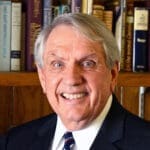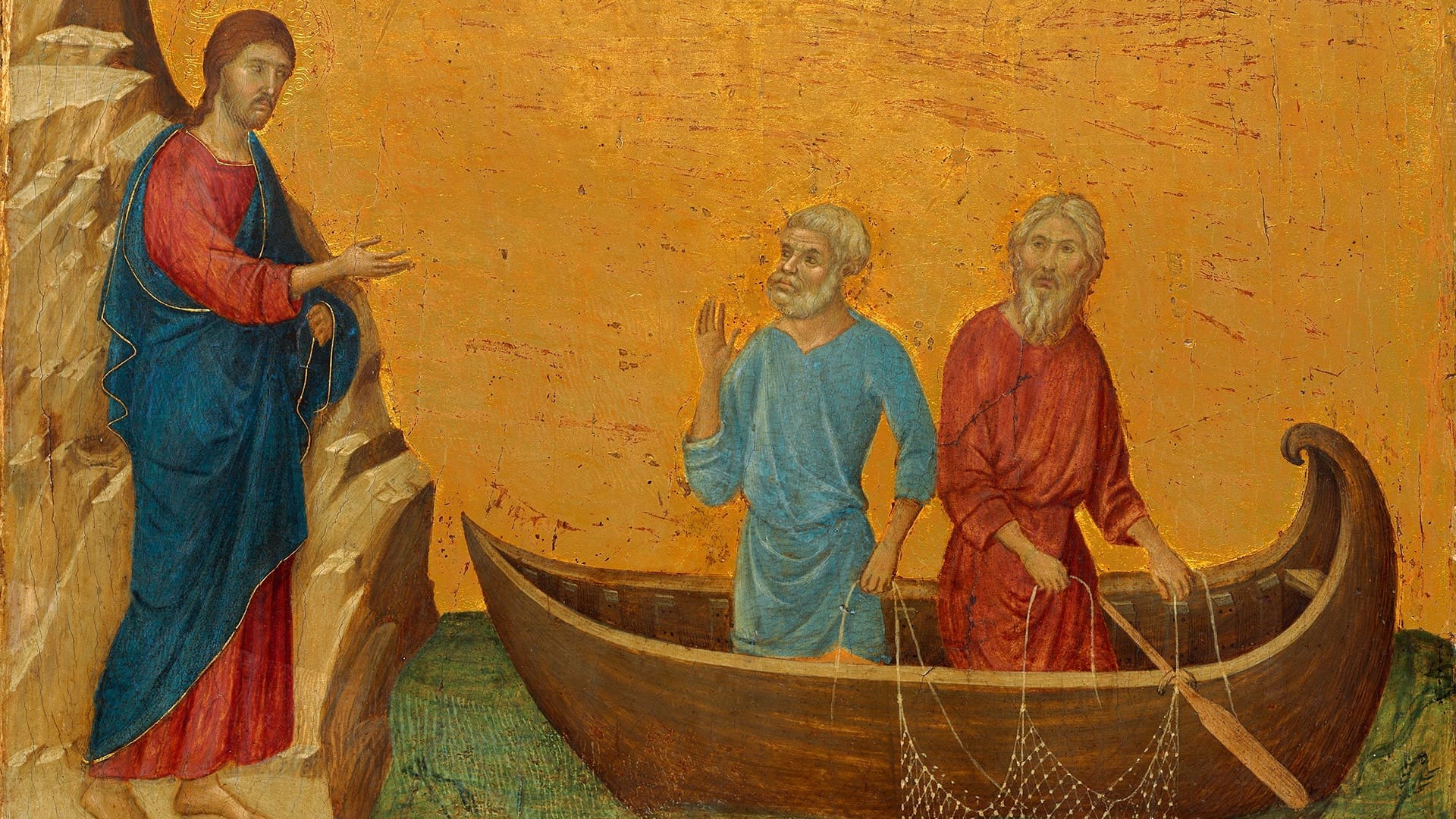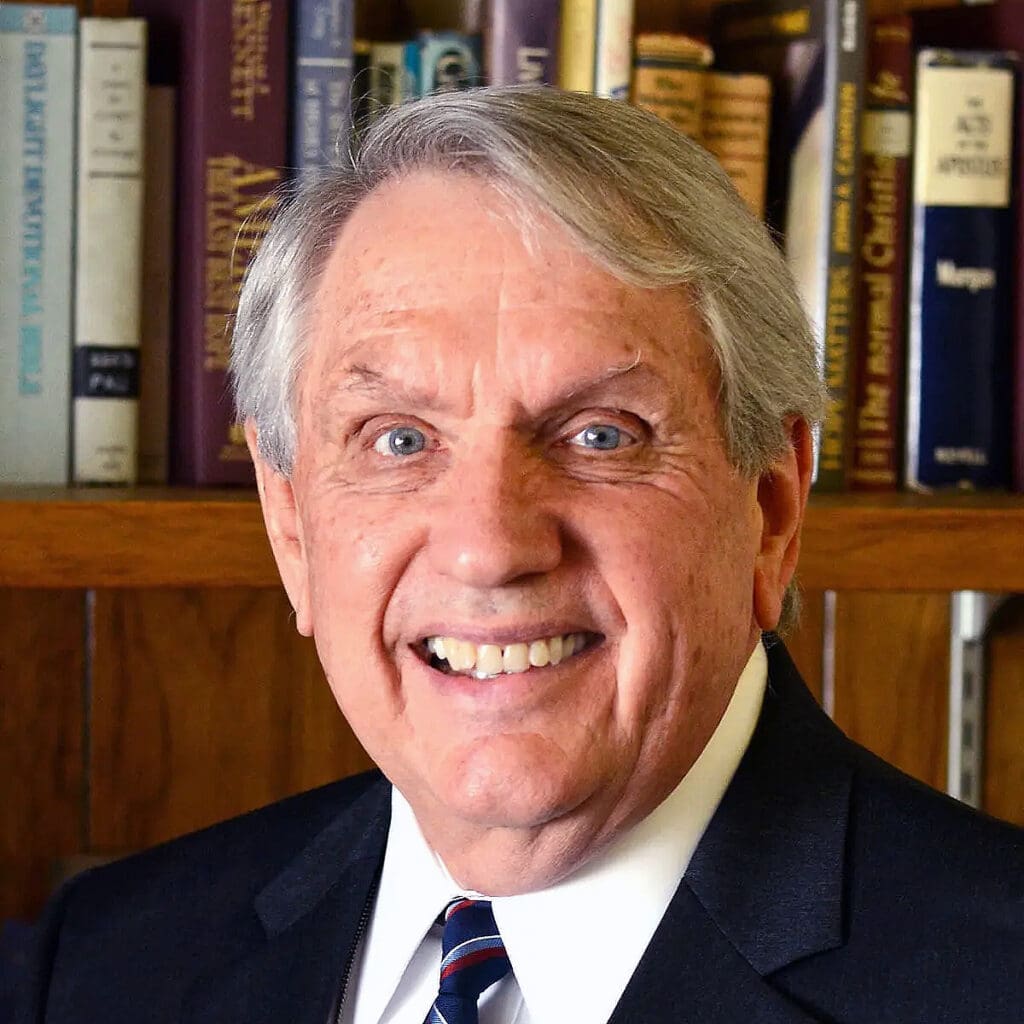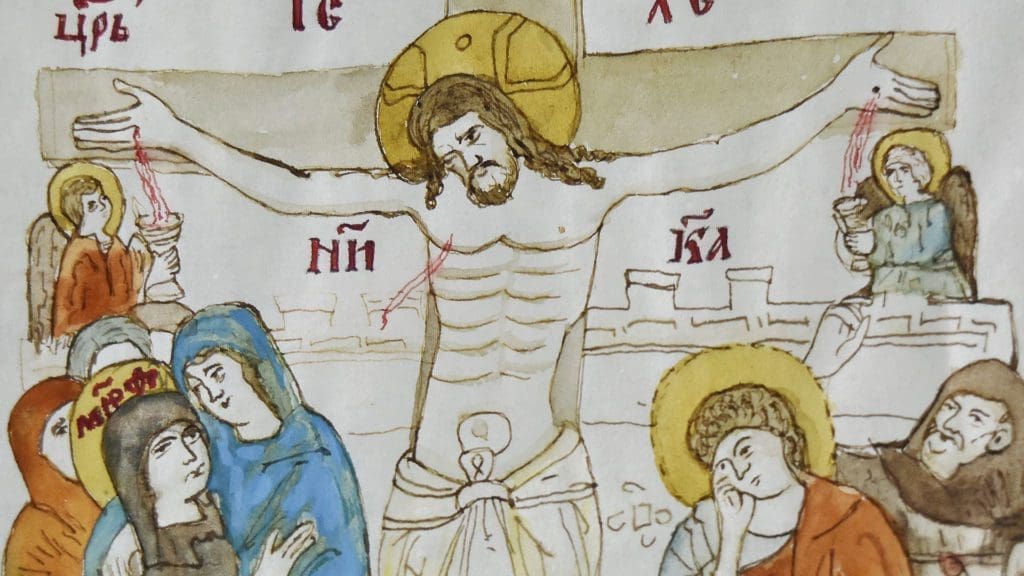A
A few years ago, I was on a flight when a toddler sitting several rows up began to laugh a laughter that we southerners call “belly laughing.” Belly laughing is when you laugh so hard that your legs get wobbly and eventually you fall down laughing and just roll on your belly. That kid was belly laughing. I started laughing too. I couldn’t help it. Each time the child drew a quick breath before the gales came again, I broke out again laughing like crazy with him. I was in perfect laughter cadence. There must have been six rows of folks sitting around that spark of hilarity, and all of us were exploding. I had no idea what the child was laughing about. I never knew. We were not laughing at the activating event. No, we were all laughing with the laughter itself. Even now, when I tell that story, people light up and smile. Some even chortle a bit themselves, and they weren’t even on the plane!
That little moment is a reminder of the truth that science has amply confirmed. Not only are all humans connected genetically; we thrive in the presence of others’ kindness and joy. When we witness an act of giving and receiving, our serotonin levels go up. We are fundamentally constructed to connect through caring for one another.
How I wish that this truth was the whole truth. But alas. What is also true is that our entire species (and because of our species, the entire earth) is teetering on the brink of annihilation. All around us and within us is a growing despair, depression, and desperation. The grand history of our species plays out against the backdrop of the never-ending life-and-death struggle between the good for others within us and the mysterious presence of mass destructiveness about us. There is a palpable absence of empowering hope. Only a miracle will turn this tide and completely fill all of us with a hope that “does not disappoint.” To repeat: we need a miracle.
The great Albert Einstein said that he stood on the shoulders of James Clerk Maxwell, a Scottish physicist whose insights into the principles of electromagnetism laid the foundation for the communication technologies we enjoy today. In 1873 Maxwell delivered an essay at Cambridge titled “On Determinism and Free Will.” In that address Maxwell spoke about miracles, which he called “singular points.” A singular point occurs within history, but its occurrence is so infrequent and so relatively small that when it occurs, the finite mind cannot grasp its force for change. For example, in 1809 all the world was looking at Napoleon’s vast military exploits. Yet who noticed that a baby named Abraham was born that same year in northern Kentucky in a tiny log cabin? Retrospectively, of course, the world can now see the significance of that hour, which opened up a chance for this ship of state to be guided through the storms and into safe harbour, thereby preserving the Union and freeing those in the bondage of slavery. A singular point.
According to Maxwell, history is replete with these miracles that have changed the destiny of civilizations. A single person, a small group, an idea, a book—all can be points at which the vital moves the massive. We cannot see singular points of history in their origins. We can only grasp their significance years if not eras later.
“Any assessment of history which does not take into account the possibility of miracles is a false assessment of history,” said Maxwell. H.G. Wells named names: “I am a historian, I am not a believer, but I must confess as a historian that this penniless preacher from Nazareth is irrevocably the very centre of history. Jesus is easily the most dominant figure in all history.”
Does the singular point of Jesus take us only partway down the path to that “city with foundations, whose architect and builder is God”? Or is this singular point the means through which the conquest of the darkness resident within each and all is vanquished with the power of bringing “a new heaven and a new earth”?
But wait, you say. Why, now more than two thousand years later, do we see that we have not become better and better worldwide? Why do we find that just within the last seventy years, contrary to the hope engendered by Jesus, we are hanging on our poisoned earth by the thinnest of nuclear threads? Does the singular point of Jesus take us only partway down the path to that “city with foundations, whose architect and builder is God”? Or is this singular point the means through which the conquest of the darkness resident within each and all is vanquished with the power of bringing “a new heaven and a new earth”?
Jesus of Nazareth comes as the pioneer, the pathway, and the partner for each person to experience their soul’s unifying power in the activating of their caring connecting capacity. But even magnificently more, in the overflowing of his life among us, he will forever establish a profound unification in caring for one another and for the billions of our species as well. A new verdict is now coming into focus. It is the light of a singular point so powerful that hope will be ignited in all and for all.
And here is the evidence that clenches the proof, that all persons, for all their days on the earth, can have released within their lives the power of their own caring hearts bringing the right kind of dominion over a re-created planet. Here is also the proof we need to birth that new world so that our entire species, now billions of us, will fulfill the hope of God, which is to live in a world where love and unity and peace will reign forever and forever. It is here . . . in Luke’s Gospel:
At that time Jesus egalliasato [rejoiced, was exuberant, was full of joy, overflowed with joy] in the Holy Spirit and said, “I praise you, Father, Lord of heaven and earth, because you have hidden these things from the wise and learned, and revealed them to little children. Yes, Father, for this was your good pleasure.” (Luke 10:21)
Here, in this ancient text, lies the substantive proof that all the dreams of a new reality can become realizable. And what is that proof? Jesus of Nazareth is exploding with over-the-top joy and celebration. What we see here, thankfully preserved for all time, is the only recorded occasion of Jesus rejoicing. This includes all the Gospels and the writings of Paul and the church fathers.
Of course, we know that Jesus was a joyous man. The Scriptures give abundant witness to that fact. No “pale Galilean” could possibly attract, hold together, mobilize, and march that raucous company of men around him, who left everything to be with him. For that rough-hewn and unpolished group of guys to hang with Jesus, there had to be laughter aplenty. But this passage is profoundly more than joyful living, as vital as joy is in fuelling our daily lives. Yes! What we have here is the celebration of the certainty that a singular point has split history. He saw the “satan” in all of us fall so completely that there was now a way for the created caring kindness in each of us to forever be ascendent. To a captive humanity, completely unable to rise as a race above the gravity of our own selves, a miracle has flashed. And only Luke records the celebration of its singularity for all of us to treasure throughout all of history. “At that time Jesus rejoiced in the Holy Spirit.”
Jesus saw then what you and I can only see in the rear-view mirror of history. He saw and perceived the origin and consequence of an occurrence within history so profound that it will change each of us and all of us for all time. He saw the completion of a singular point in all its totality. He understood that the miracle that can break the chains and release the captivity of our species had happened. And he exploded in unrestrained joy!
What exactly was the miracle, the singular point? By itself, Jesus’s birth was not the singular point. Even his obedience in his baptism was not the point, nor his soul-deep appropriation of the love of God. There had to be one more vital element for Jesus to be a true singular point. This one element is what Jesus is cheering about with such rafter-raising, hallelujah-hollering, Holy Ghost–praising rejoicing. And if we miss this one unifying element for the whole of Jesus’s life, we miss it all.
The one critical element bringing about the greatest singular point of all time was the effective reproduction of his own life and way of God-living into the lives of others. It follows that the most spectacular and significant miracles within this historical miracle that Jesus lived and reproduced was not the changing of water into wine, or the healing of human bodies, or even the raising of the dead. It was his capacity to transform “sheep” into “shepherds” after his own heart. Just as Elton Trueblood observed, “I believe that Jesus is the Christ, not because of what men wrote about him, but rather what they became because of him.
The most spectacular and significant miracles within this historical miracle that Jesus lived and reproduced was not the changing of water into wine, or the healing of human bodies, or even the raising of the dead. It was his capacity to transform “sheep” into “shepherds” after his own heart.
Jesus’s powerfully contagious transmission to others of the means for effective living, which accentuated to ascendency the caring kindness of our nature, could only be accomplished by his being a true teaching genius. His sharing of all that he was for his twelve apostles, and for the others who trusted him with their lives, birthed an incredible occurrence in their presence. It was a relational miracle that opened up the floodgates of receptivity and willingness to live an entirely new life of hopeful obedience for them—and for all of us! Here is what I mean.
When we strike up acquaintances and grow those into friendships, we do so with the unconscious expectations that our initial attraction to our new friend will bring us joy beyond measure. Then, as we move from attraction into a deeper attachment as friends, one of the repeating stages that we encounter in our friendship, a stage that we must go through to deepen our relationship, is disillusionment. When we begin to see more into our new friend, we begin to see shortcomings. And the more we see their faults, the more our own are revealed. That is the rule in relationships. It is the norm. But the closer Jesus and his fellows became, and the more they lived together day in and day out, and the more they witnessed him facing with conquering steps every life situation and challenge in the world, the more they esteemed him! The closer they became, the more they were convinced that this peasant carpenter from Nazareth was a new kind of human being. As they walked, he rose and kept rising without ceasing in their estimating eyes. Remember, these men were not buffoons. Jesus had a tough, tough congregation to transform. Yet as they went, they called him “Master” and “Lord,” and they obeyed his commands. It was his radical transparency that empowered his transmission of the content and completion of the faith walk of love into the very core of his followers.
So what made Jesus soul-shout in joy? He saw that his teaching and his training worked. The Great Transmission had begun! He knew that life’s most critical victory had been won when his followers stepped in his footprints. What he experienced everyone could experience. Now everyone must know, and everyone could know! A new earth, so longed wished for, would be the result. Transmission of this truth was the key. Could this Way go viral? That was the test for the ages. And this was the edge-of-the-seat question: Could his followers adequately transmit, through teaching and training, this breakthrough of life itself to others, who could then do the same?
To fully understand the significance of this first-century challenge, notably missing all our modern communication paraphernalia, we must remember that teaching is more than presenting the facts and life skills that constitute knowledge and wisdom. Teaching also means producing in the learner’s life the truths that are presented as knowledge and wisdom. There is no teaching without learning. Both teacher and learner, facts and skills, are necessary for teaching.
We must remember that teaching is more than presenting the facts and life skills that constitute knowledge and wisdom. Teaching also means producing in the learner’s life the truths that are presented as knowledge and wisdom.
Jesus fully lived the kingdom of God lifestyle. Within himself, he lived heaven on earth. But if there is no effective transmission to us, and through us to others, then we are left with a sui generis, historically isolated act. Without effective reproduction, Jesus’s life may rip from us a spectacular awe, but it is an awe resulting in a genuinely sad and awful realization that the door is slammed forever on our own hope of conquering our ruling monsters within. Hope evaporates. There is no singular point without the repetitive reproduction of that life transformation in others until the entire world is changed. The early followers of Jesus held firm to that reality in their transcendently true slogan: Christianus alter Christus! The Christian is another Christ!
It is never enough to start and to stop with “The Word was made flesh and made his dwelling among us.” If we stop there, two things result. First, we remain an admiring member of an audience to the great concert of a life so well lived that we cannot possibly replicate it on the stage of history. Therefore we individually live in defeat. And second, there is no progression into a new future of true caring harmony reigning in our world unless the entire human population on earth has the Word made flesh within them. If the headlines of our world do not one day read “And the Word Was Made Flesh in All Humanity for All Time,” then we have utterly and tragically missed the entire purpose of Jesus’s fabulous celebration in Luke 10:21. Let’s look together again. This time perceiving.
In Luke 9, Jesus sends out the Twelve with the “God’s kingdom come and will be done on earth just as it is in heaven” message and lifestyle. He assigns them the task to present this compelling proclamation that the new world for which all so deeply yearn is here. But their assignment entails much more than this.
They have been trained and charged and instructed to produce that loving lifestyle in the people who hear and choose to follow so closely until they, too, become the agents of teaching. The hearers are to become learners, who are then trained to become teachers, who then effectively seek out hearers. It is rinse and repeat for the human soul and the soul of all humanity, until the folks who are “fully trained become like their teachers” (Luke 6:40).
So the Twelve go forth and follow their instructions as they go from village to village. They come back and report to Jesus how they incorporated his power and authority in their own walk. They met the people where they lived. They followed Jesus’s training to the letter in eradicating the demonic. They brought cures to the sick folk and always proclaimed that God’s kingdom of love was now present with power in such a way that if you were willing, you could experience its radiating power until you became radioactive yourself.
Jesus does not celebrate when the Twelve return, according to Luke. They just did their job as they were expected to do. But what follows is the reason we have a miracle of history working its way in our midst today as both leaven and salt. It is this seed of a new humanity still growing secretly in the soil of our present that we now behold.
Now turn to Luke 10. In Matthew’s Gospel it is the “seventy” who are sent out, but the best Greek manuscripts for this section of Luke’s Gospel read “seventy-two.” Why is this two-person discrepancy significant? Here could be the answer. Jesus trained the Twelve and sent them from village to village transmitting the great good news. The Twelve did as they were instructed. But now see this: sometime after the sending of the Twelve (we do not know how long, but time enough for them to train others), a larger, equally equipped, and similarly instructed group is commissioned. Luke provides in-depth details of Jesus’s charge to them. There are now seventy-two standing ready. See? Does this mean that each disciple has now fully trained six new workers to go into the vineyard of humanity?
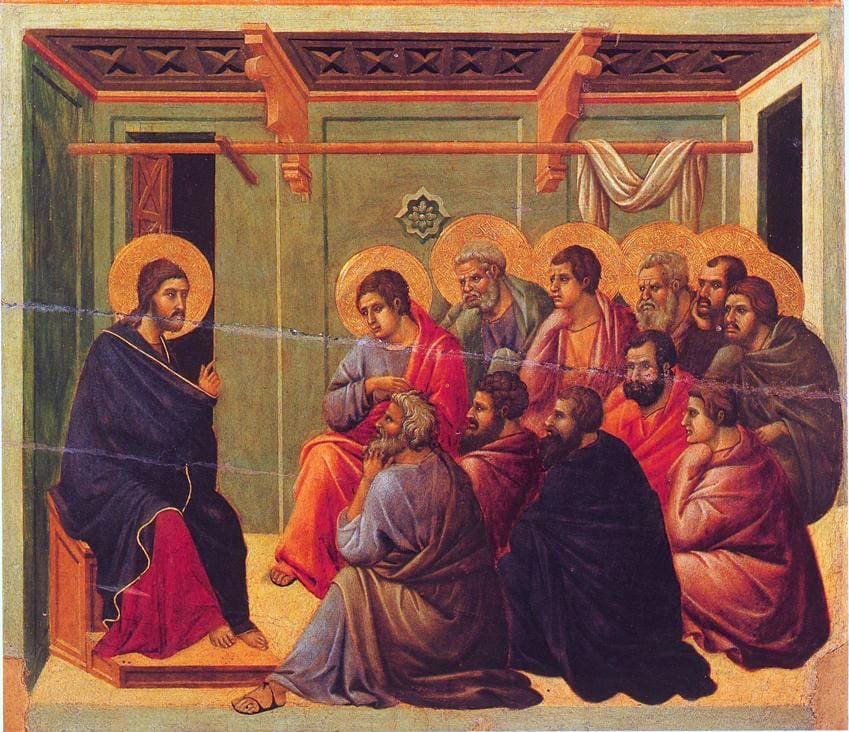
In this chapter of Luke, we cannot help but see the profound significance that Jesus now brings to bear on this fresh cadre of those who bring God’s kingdom. They go forth together, in twos, as sheep among wolves. They travel as the advance teams into every town and place where Jesus planned to go. They are to sow the seeds of faith and hope and love, preparing a brand-new garden as the cradle of a new humanity. These were to be the firstfruits of a whole harvest of new beings for a redeemed humanity.
There is systematic strategy and intentional method here that is vital for us to see and understand. Our Artist, who profoundly portrays the art of living, provides his craft for all to learn. In this way, we, too, in our uniqueness may bring God’s truth mediated through our personalities for the creating and the recreating of the new beings of loving kindness to come. This is a craft that can be, and must be, learned and practiced and perfected for the eternal healing of all of us. Paul told us that this new being in the love of God is the only thing that matters. It will take a whole harvest of new beings who can populate and thereby grow God’s new world. Listen to God through Isaiah: “Behold, I am doing a new thing! . . . Don’t you perceive it?” (Isaiah 43:19).
Here is how Luke describes the manifestation of history’s singular point: “The seventy-two returned with joy and said, ‘Lord, even the demons submit to us in your name’” (Luke 10:17). I believe that it was this very report that gave the final, rock-solid, evidentiary testimony sealing the cumulative evidence that Jesus had indeed actualized the decisive singular point of history.
Yes, Jesus taught and trained the Twelve to teach and to train. These in turn taught and trained others to teach and to train, and so on and so on, until the world was to be filled with the leaven of new lives now living in new ways. In that regard, let us remember two salient truths. First, recall that teaching is the successful transmission between teacher and learner of the facts of life in order to gain knowledge and wisdom (which is the fruitful application of knowledge). And second, the act and process of transmission of truth is fundamental to the reproduction process involving the lives of both teacher and learner. This means that the process of transmission must be replicated over and over again intentionally and systematically in order to reproduce the multitudes of lives necessary to fill the world with persons controlled by love’s guiding embrace.
There is no singular point without the effective transformation of lives, who change the living environment. And there is no transformation of the living environment without an explosion of changed human beings. Thus, all is dependent on the efficient power of the transmission of this new reality of possibility realized in the lives of the learners. Here we behold the genius of Jesus. Jesus knew that the true evidence for a historical transformation did not lie in the twelve lives that had been transformed by his life’s example. If the story stopped there, it would tell only of twelve others modelling a victorious life. Some movement. If we leave the story in Luke 9, this would be a “movement” that could fit into a modern-day subway car and rattle around with space to spare. There had to be more.
The story had to start with the Twelve, expand to the Seventy-Two, and eventually encompass the world. The crucial question was, could the Seventy-Two themselves both live this new life and effectively spread the good news of those new-life possibilities? In other words, did the Twelve, adhering faithfully to their training in every detail, each train their six cohorts just as surely and powerfully and successfully as Jesus himself had taught and trained them? If so, then the results of the Seventy-Two would match and multiply those of the Twelve.
These were the results, so pivotal for the success of his strategy, that Jesus was patiently waiting to receive from the Seventy-Two. If the second generation of followers were as effective as the first generation in growing the new being from seed to bud to blossom to fruit to seed again, then Jesus and his followers could reasonably expect a worldwide harvest of new beings populating and transforming our entire our species. To explain this strategy simply, Jesus uses the analogy of salt’s power to give fabulous savour to the food on which it is sprinkled. When one sprinkles the salt, it touches and stays and melts. Its powerful penetration results in a wholesale transformation of the taste. It spices.
And the Seventy-Two brought their report: Mission Possible! At that time Jesus rejoiced. The word spread! The necessity of transmission for individual and global transformation now had a dynamic way to go forward with viral power.
Today, we all must go spreading the good news of the way of God’s love. We all are just as surely commissioned as were Jesus’s band of followers. We never go alone. Jesus’s transcendent presence incarnate within his vision for a loving world filled with loving lives goes with us. And we go together as well in an unbreakable fellowship giving us the strength of friendship to continue against all the odds swirling around us and surfacing within us. A singular point is not a singular point unless the transmission of its power to people is centre stage. One commanding property of fire is that it sets things on fire around it. This transmission depends on each and every person living the same Jesus lifestyle, the same story that Jesus preached and lived. “Make love your aim” (1 Corinthians 14:1).
Father Teilhard de Chardin once said, “Someday, after mastering the winds, the waves, the tides, and gravity, we shall harness for God the energies of love, and then, for the second time in the history of the world, man will have discovered fire.” That second time has come in the singular point brought by Jesus and his followers. Remember when Jesus in John’s Gospel blows his breath on the disciples? “Again Jesus said, ‘Peace be with you! As the Father has sent me, so I am sending you.’ And with that he breathed on them and said, ‘Receive the Holy Spirit’” (John 20:21–22). Power!
The question today is not, Can it happen again? The questions now are these: Are we willing to devote our lives to join together and collectively breathe on what has become for our generations only the glowing embers of a once-fired-up humanity? And do we have the will to keep blowing until the fire of God’s love is a global conflagration, eternally fuelling our lives for all time to come?
Yes, we can repeat the conditions for the singular point that Jesus and his followers brought when we are completely confident that there is a Way today for the same transformation of our lives into a new humanity by choosing to live for the goodness of others. This choice is the crucial choice of each person’s life. The devotion to that choice and the endurance it must entail means that we must choose daily to walk in the pathway of our own via dolorosa, just as Jesus walked his. But in our case we never walk it alone. Remember that Jesus and his followers spread the breakthrough for new life and living without the extraordinary validating power of his crucifixion and his rising in conquering love. They did not have or need those two factually affirming demonstrations of love’s power to explode the reality of new life in the lives of first-century Palestinians. They took no bag of theological doctrines for their journey, nor did they sit in the cushioned comfort of protective worship buildings or have gold aplenty. Jesus made sure that all they had with them on their life-transmitting journey was the absolute conviction that God’s goodness can arise from its slumber and conquer the divide of the soul with his love.
Look at that first-century band. They were a tiny seed of new beings. They appeared so fragile on the landscape. They lived in a land that had been conquered and conquered again. Egyptians, Assyrians, Babylonians, Persians, Macedonians, and now the Romans hammered “this nation of priests, a holy nation,” with blows so concussive that hope should never awaken again. But successive fathers for generations had shared, even as they suffered, what Isaiah and Micah—seeing the glorious end from the beginning over six hundred years before Jesus was born—foretold: that the day would come when “men would beat their swords into plowshare and their spears into pruning hooks.” And the mothers of Israel and Judah sang to their young ones the prophet’s lullabies: “Nation shall not lift up sword against nation, neither shall they learn war anymore” (Isaiah 2:4). Hope would not go down. The kingdom of God was coming. It is here.
The tiny group sat around Jesus. They all knew of the Galilean revolt that Judas the Galilean led against Rome just a few decades earlier. They all knew of the more than two thousand crucified Galileans that resulted from its failure. There was probably no family or neighbour untouched by those horrific days of Rome filling their streets with blood. They knew oppression and felt its pain every single day. Yet here is Jesus telling them, “Do not be afraid, little flock; your Father has been pleased to give you the kingdom” (Luke 12:32). The simplicity of Jesus’s message was grounded in the hope that all of Israel already knew and understood. He awakened it from its dormancy or rote recital into the possibility of giving everyone a reason for the hope that was now ablaze within them. There is a Way.
William James, in his famous Gifford Lectures at the University of Edinburgh, “The Varieties of Religious Experience: A Study in Human Nature,” spent two full lectures on the phenomenon of human transformation that we call “conversion.” His definition has become classic. Conversion, said James, is “the process, gradual or sudden, by which a self hitherto divided, and consciously wrong inferior and unhappy, becomes unified, consciously right superior and happy, in consequence of its firmer hold upon [transcendent] realities.” The simplicity of Jesus’s way answered this deepest longing resident in every human being: we can be changed, and when we are changed, the whole world can be changed too.
In Jesus’s day there were anywhere from 170 million to 400 million people living on earth. Every single one of them was created to connect with others through caring kindness. Now there are eight billion, still created in the same way, created to live as teachers, by the light of the living miracle.
